| 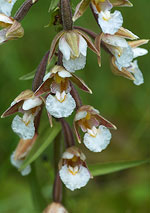
kliknij,
aby powiększyć
click to enlarge
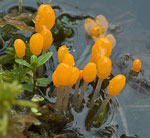
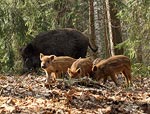
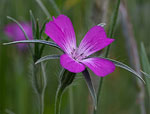
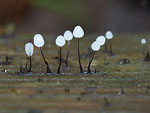
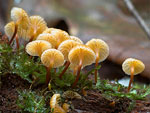
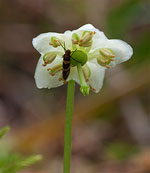
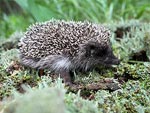
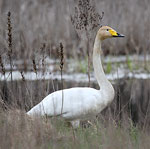
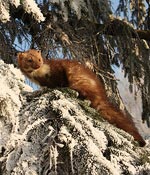
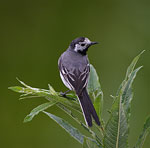
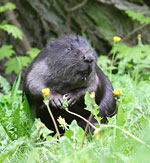
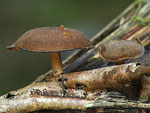
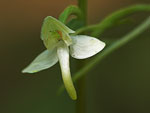
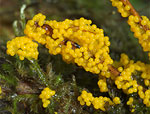
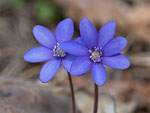
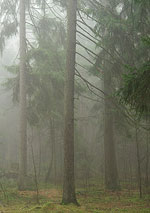
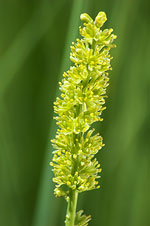
|
SUMMARY
The most important visit that Wigry
has experienced was in June 1999
when Pope John Paul II rested
here during his pilgrimage to Poland.
He said:
“a beautiful lake… I must be there.”
WIGRY LANDSCAPE
The Wigry lanscape was formed by a Scandinavian
glacier several thousand
years ago. For over 500 million years, the landscape
had changed
many times, and for long periods it had been a sea bottom. in the last
period covering one million eight hundred thousand
years eight “glacial
epochs” took place. Each consecutive glacier
engulfed existing flora and
drove away animals, brought new beds of clays, sands
and rocks, moved
older deposits and shaped the land surface anew.
Heights, hills and ramparts made of rock material
deposited by a glacier
or displaced by its pressure add variety to the
landscape. Ground lowerings
were filled with water – lakes came into being,
later on, also peatbogs.
Rivers and streams flow in some lowerings.
Vegetation appeared
in place of the receding glacier. This land was
already covered by pine
forests with a large participation of birch about 10
000 years ago. The first
traces of people’s presence – reindeer hunters, come
from those times.
After the climate had warmed up, the hunters
followed reindeer north.
Primeval forest grew here 8 000 years ago, where
small groups of hunters
hunted deer, tarpans, wild boars, bears, beavers and foxes. They fished
and picked forest berries. They built their camps on
sandy river banks
and lakesides.
When the climate got colder, 3000 years ago, there
were definitely more
spruces than other kinds of trees in the forests.
More numerous people’s
settlements started to appear on this land from the
turn of the 3rd and 4th century. However, people’s influence on nature
and landscape was
insignificant.
From the end of the 2nd to the
beginning of the 5th century,
settlements existed in a few places on Lake Wigry.
In the Middle Ages,
from the 7th to the 13th century, the land between
Great Masurian Lakes
and the Niemen River (the area of present
Suwalszczyzna) was inhabited
by the tribe of Jatvings – one of the west-Balt
tribes. After the land had
been conquered by Teutonic Knights, at the end of the 13th century, the
Wigry surroundings were again covered by forests.
The Wigry landscape began to change in the second
half of the 17th century
thanks to the Camaldolite order. The monks built a monastery on the
Wigry peninsula. They brought settlers, part of the
forest was cut down
to make place for villages, manors and ironworks.
The network of settlements
together with the town of Suwalki founded by
Camaldolites, with
small changes has survived till the present day.
In the 19th and at the beginning of the 20th century
the forest around
Wigry was being cut down. After the wasteful
exploitation during World
War I, forests covered only 50% of this area.
However, the area of forest
started to grow thanks to a better forest management.
The establishment
of the landscape park and a network of nature
reserves, and, particularly,
the establishment of the national park began a slow
process of restoring
forests to their natural character. Also waters,
peatbogs and agricultural
landscape shaped by history were taken under
protection.
The Wigry landscape has preserved high natural and aesthetic values.
The mosaic of forests, lakes, meadows, farmland and tree-covered areas
in open, undulating country are a value which should
be protected for us
and future generations.
LAND of WIGRY WATERS
Complex of Lakes
The Wigry National Park is distinguished from other
Polish national parks
by a variety of water ecosystems. Altogether, they
cover the area of 2732
ha, which is 18% of the Park’s area. Different sizes
of lakes attract our attention.
Fertility of particular lakes has the biggest
influence on the variety
of aquatic organisms. Lake Białe Wigierskie is the
least fertile – with clear,
blue water, rich in oxygen, inhabited by varied
plant and animal complexes.
The vegetation immersed in Lake Białe is dominated
by a complex of stoneworts – big algae. Lakes Białe Piercianskie,
Czarne near Bryzgiel,
Długie, Okrągłe and Muliczne are a little more
fertile. They are characterized
by a higher production of plancton algae, in comparison with Lake
Białe Wigierskie. Eight reservoirs, including the
largest lake in the Park
– Wigry, are lakes of medium fertility. in the Park
there are also small,
in-forest water reservoirs, called 'lakelets', usually
with regular shoreline,
small depth, fed by groundwater, and often surrounded by low
peatbogs. They are: Samle Małe, Samle Duże,
Gałęziste and Przetaczek.
Plants requiring clean waters, rich in calcium,
mainly the stoneworts,
grow in them. Many animals have their habitats there:
invertebrates, fish,
amphibians, many species of birds, and beavers.
The 'suchary' constitute the most numerous group of water reservoirs in the Wigry National Park. The name suchar (a big rusk)
is a regional term,
typical of the Suwalszczyzna region. Some claim that
it derives from frequent
occurrence of dead, dry trees on the lakes’ shores.
The suchary
are characterized by low fertility. Their water
contains large amounts of humous acids – organic substances coming from
decomposition of needles,
leaves, litter, which are washed down from the
coniferous forests
surrounding the suchary. These substances give water
a specific dark
brown colouring, decrease its clarity and cause
acidification. There are
18 reservoirs in the Park which are typical suchary.
The suchary have
specific fauna which is tolerant of acidification of water. The world of water
invertebrates is particularly rich. The variety of types and ecological condition
of particular lakes in the Park call for protective
actions, specific for
particular ecosystems. 8 water resevoirs are under
strict protection. One
of the trends of active conservation of water
resources and ecosystems is
restoration of small water reservoirs, both in open
agricultural landscapes
and in the Park’s forests.
Going downstream…
Each of the rivers in the Wigry National Park has
its own charm and specificity.
The biggest river in the park – the Czarna Hańcza, is
characterized
by change- ability. It flows rapidly through the
forest before it flows into
Lake Wigry. When it leaves the lake, it slows down
its current and meanders
among meadows and fields.
Another river – generally, the lazily flowing
Kamionka – also creates a rushing
and stony water gap. The waters of the Wiatrołuża carve a river valley
which is the deepest in the Park, and the Maniówka is characterized by
a great seasonal changeability of water flow. The
length of the Samlanka and the Bystra does not exceed one kilometre, and that of the Gremzdówka does not exceed two. Despite natural and landscape
dissimilarity,
all the flowing waters are connected by their
original natural beauty.
The Park’s rivers – all apart from the Czarna Hańcza – are small, and thus
particularly sensitive to all kinds of influence of human activity. They have
preserved their natural beauty and value thanks to
insignificant interference
of man. Inflows of pollution from the area of the
whole catchment
basins, mainly located outside the protected area,
decide about the quality
of river waters. This concerns the Czarna Hańcza in
particular, whose
catchment basin covers the area of nearly 190 sq.km.
Wandering along
marked out tourist routes running next to the rivers,
one can observe various
vegetation complexes typical of boggy river valleys,
see a crane,
a white-tailed eagle, a beaver, an elk, or even a wolf here.
Landscape values and abundance of flora and fauna in
these small river
lands can be admired from viewing points or when
walking along some tourist trails.
PEATBOGS
Wetlands – peatbogs are an important element of nature in the Wigry
National Park. Although they occupy a relatively
small area, they have
a great importance for the general natural diversity
of the Park’s area and
influence water relationships in their vicinity. a lot of them are of natural
character and and are a habitat of rare, protected
species of both plants
and animals.
High peatbogs develop in basins, on impermeable for
water substratum,
in the surroundings of little fertile catchment.
They are fed by precipitation
only. With time, a marshy coniferous forest develops
on a high, dried peatbog.
Suche Bagno is the largest high peatbog under strict
protection.
Low peatbogs are the most common type of boggy
enivironments in the
Park. Most often they develop in places of insignificant but constant flow
of water rich in feeding substances – in river
valleys and near lakes. The
largest areas of peatbogs are found in the Czarna Hańcza valley and on
lakeshores. Turf peatbogs are a little different
type of low peatbogs. They
develop on water-head areas, mainly in the valley of the Wiatrołuża. Turf
peatbogs are very valuable in nature. It is there
that one can come across
numerous, rare species of plants.
Carbonate peatbogs developing on beds of lake gyttja – lake bottom deposits
very rich in calcium carbonate, are another type of low peatbogs.
The largest peat bog of this type can be found on
Jurkowy Róg, near the
village of Krusznik.
As a result of natural succession, the areas of low
peatbogs most often
change into willow brushwood, later on in alder
carr, but also in wet, rich
meadows.
Transitory peatbogs are the rarest kind of peatbogs.
They are intermediate
stages between low and high peatbogs. Pło is a specific form of transitory peatbogs. It is a floating mat of peatbog
vegetation, developing
near lakeshores of the suchary – acid lakes with
water containing large
amounts of humous acids. The pło is composed of peatmoss mainly.
Sundews – Drosera rotundifolia, Drosera anglica and
Drosera intermedia - growing in large numbers are often found on the
pło.
As a result of the natural succession the transitory
peatbogs are overgrown
by marshy birch forests, turning into forest
peatbogs, with downy
birch predominating and numerous participation of bog bilberry and whortleberry. They are rarely overgrown by marshy
coniferous forest. An
intermediate form of a transitory peatbog between a forest type and an
open one is Salix rosmarinifolia brushwood and dwarf
birch brushwood
– a postglacial relic.
FORESTS ON LAKE WIGRY
The forests of the Wigry National Park occupy the
northern part of the
Augustów Forest, which is the largest compact forest
complex in Poland,
and together with the forests in Lithuania and
Belarus it forms the largest
forest area on European lowland. The main tree
species forming the treestands
in the Park include the Scots pine and the common
spruce. The
common oak, common silver birch, downy birch and common alder play
a less significant part. The remaining species of trees: aspen, ash-tree,
linden, maple and elm occur as additive species in the upper layer, and hornbeam in the lower layer of the forest stands.
Altogether, the forests
cover about 9.4 thousands ha (62% of the Park’s
area). The Wigry forests have preserved their
primeval-forest character. Coniferous forests,
marshy coniferous forests and alder carr are the
closest to the natural
forest complexes. Also red whortleberry coniferous
forests have been
preserved on a small area. Mixed coniferous forests
and mixed forests
are predominant here. Alder carr and marshy meadows
occur along water
courses. In the spacial layout of the Park’s forest
complexes two areas
can be distinguished. The first one, lying north of the Czarna Hańcza,
above Lake Wigry, is an area of varied land relief.
One can find here
a mosaic of quite fertile habitats with the spruce
in upper layer of the treestands.
The other area, lying south of the Czarna Hańcza, is
significanly
less varied. It is mainly a sander area, in which
habitats of mixed forest
and mixed coniferous forest with towering pine are
predominant.
The Scots pine is a species reigning in the Wigry
National Park. It occurs
on nearly 80% of the Park’s area. The common spruce
is the most dynamic
tree species in the Park’s forests. It is
predominant in 12% of the
treestands. The common alder reigns in areas with a high level of ground
waters.
In the forests of the Wigry National Park dry-ground
forests constitute the
most numerous group of forest habitats. a sub-boreal
mixed coniferous
forest is part of many forests in the Park.
a small part of forest ecosystems (about 3% of the
forest area) was taken
under strict protection. Protective activities,
whose superior aim is restoring
composition of treestands natural to particular
habitats, are carried
out in most forest areas of the Park. The protective
activities conducted
by the Park contribute to maintaining an ecological
balance in the forests,
and increase their natural variety.
AMONG FIELDS and MEADOWS
Land non-forest ecosystems: meadows, pastures,
fields and orchards,
are equally valuable and important to preservation
of biological diversity.
There are about 2200 ha of farmland within the Park.
The non-forest
areas include: farmland – mainly crop growing and root-plant growing as
well as meadow and grass communities – fresh meadows
and pastures,
also dry meadows and stenothermal grass,
multi-growing wet meadows
and peatbogs. Many species of plants and animals are
connected with
areas transformed by man, such as: gardens,
surroundings of home
steads, meadows and fields. They are elements of biological diversity.
Many rare plant species, often under strict
protection, are found in meadows
and fields.
a number of projects concerning protection of biological diversity of agricultural
areas have been prepared and implemented in the
Park’s cooperation
with non-governmental organizations. Two projects
promoting
breeding of native breeds of farm animals and growing of local varieties of apple-trees and pear-trees began in 2003 and are
still in progress. Also
a project concerning home gardens and school gardens
was conducted.
The project aimed at creation of traditional
gardens.
WORLD of PLANTS
The occurrence of over 1000 taxa of vascular plants
have been confirmed
in the Park. Dissimilarity of forest plant
communities in the north-eastern
end of Poland is big, and this area is included in a boreal zone of mixed
coniferous forests and mixed forests. The occurrence
of many protected,
rare or becoming extinct species is evidence of a great value of the flora.
83 plant species in the Park are under strict
protection, moreover, 15 species
found in the Park are under partial protection. The
occurrence of 76
plant species entered in the Polish Red Book of Plants and on the List of Endangered and Rare Plants has been confirmed in the
park.
The plants mentioned in the 2nd and 4th annexes to
the Habitat Directive
come under protection in the whole European Union
and belong to the
most valuable plants in the Park on the European
scale. Marking out of special protective zones for them is necessary for
their protection. The
occurrence of 7 such species has been confirmed in the Park. They are:
the agrimony, the aldrovanda, or orchids – the
lady’s slipper and the Loesel’s
fen orchis, the pasque-flower, the saxifrage and the
Thesium. The
agrimony, the Thesium and the saxifrage have strong
populations in the
Park, and thus the Park is an essential refuge for
these species.
Some plants and and their communities can be
endangered by expansion
of new species, those which are able to take
possession of new habitats
quickly and to drive native flora away from them.
Therefore, the Park actively
fights some foreign plant species. The great number
of Sosnowski’s
hogweed – an expansive and dangerous plant also for
man because of its scorching properties - has been
reduced sucessfully so far. Such invasion
species as: small-flowered noli-tangere,
Impatiens glandulifera,
pondweed (Reynoutria japonica), bird-cherry, red
oak, Echinocystis lobata,
golden rod (Solidago gigantea, Solidago canadensis),
Ramanas rose
and Acer negundo potentially pose the biggest threat
to the Park’s flora.
FUNGI and THE MYXOPHYTA
275 species of lichens have been found in the Wigry
National Park, many
of which are under legal protection. This group
includes, among others:
Usnea hirta, Usnea subfloridana, Ramalina farinacea,
Ramalina fastigiata and Bryoria fuscescens. More interesting and rarer
species of lichens
found in the Park include: Cetraria pinastri
containing vulpine acid, which
is very poisonous, Lobaria pulmonaria – an
endangered species, Hypotrachyna revoluta or Cetraria islandica – species getting
rarer and rarer
in Poland.
Large-fructification fungi , among which we can find
the edible boletus
(ceps), looking like the Tylopilus felleus, the
commonly found bay boletus
or the umbrella mushroom. The common morrel and the
saffron milk cap
occur here much more rarely.
The Myxophyta are organisms combining some
properties of fungi and the most primitive animals, such as protozoa. Their occurrence is connected
mainly with shady, wet places with a lot of dead
organic matter.
83 taxa (i.e. sytematic units) have been found in the Park: 78 species
and 5 varieties of the Myxophyta belonging to 8
families. The most taxons
represent the family of Physaraceae – 20,
Stemonitidaceae – 16, Trichiaceae
– 14, Cribrariaceae – 10. The remaining families:
Didymiaceae,
Arcyriaceae, Reticulariaceae, Ceratiomyxaceae are
represented by
a smaller number of taxa.
ANIMALS of FORESTS, FIELDS, LAKES and RIVERS
Invertebrates
A great variety of water and land habitats is
reflected in varied invertebrate
fauna.Nearly 2000 species have been found in the
Park. They include
some groups of insects, such as dragon-flies,
heteropters, cockchafers
– Carabidae, Haliplidae, Dytyscida and
Staphylinidae, hymenopterous
insects – Sphecidae, Colletidae, Andrenidae,
Halictidae, Melittidae, Mehachilidae,
Anthophoridae, Apidae and Myrmecidae, belonging to
Diptera syrphidae, and also caddis-flies and some
butterflies. Special attention
was devoted to hymenopterous insects, which are
connected with clay
substratum.
Among the invertebrate fauna in the Park, there are
66 species under
strict protection and 6 under partial protection.
Over 50% of all protected
invertebrate species in Poland live in the Park.
Some of the species under
strict protection are, e.g.: leech, mollusc – swan
mussel, snail – Vertigo
moulinsiana, Bombus semenoviellus, cockchafer –
Carabus coriaceus or
the butterfly Boloria aquilonaris. in the Park’s
invertebrate fauna there
are eight relic species: crustacean Pallasiola quadrispinosa, cockchafer
Carabus menetriesi, butterfly Oeneis jutta, four
species of ants (Harpagoxemus
sublevis, Myrmica sulcinodis, Camponotus
herculeanus, Formica aquilonia) and Bombus jonellus. These species are
relics from the glacial
period and despite warming up of the climate they
survived in refuges with
favourable climatic conditions.
Fish
The complex of Wigry lakes forms a special complex
of water ecosystems,
inhabited by numerous fish species. Here you find
lakes with vendace,
bream, tench and pike, crucian carp and lakes called
suchary. Also
rivers have very interesting, varied fish stock.
In the Park’s waters there are 31 species of fish,
which constitutes over
50% of freshwater native ichthyofauna in Poland.
Five of them: weather
loach, spined loach, loach, bitterling and brook
minnor, belong to protected
species. The spined loach, weather loach and bitterling are on the list
of Natura 2000 species.
Species composition of fish in particular water
reservoirs is different. The
biggest diversity of fish is found in vendace lakes,
of which Lake Wigry is
an example with its 26 species. in bream lakes
(Krusznik and Muliczne)
there are fish with significantly smaller
environmental requirements. The
bream, roach, rudd, tench and bleak are predominant
here. in shallow
water reservoirs with well developed underwater
meadows, the tench and pike have excellent living condition. Extremely
unfavourable living conditions
for fish are in crucian carp lakes and suchary.
The rivers here are also rich in fish. Running
waters are inhabited by typically
river fish or multi-environmental ones. The former
ones, which like
currents, are trouts, brook minnors, ides, chubs,
daces and loaches. The
latter are the common carp fish, perch fish and stickleback fish such as
roaches, fish from the Cyprianide family, bleaks,
breams, perches and sticklebacks.
Thanks to fish stocking, the Park managed to restore
the lake trout and catfish to Lake Wigry. Also the population of tench
has been increased
recently in lakes Wigry and Pierty.
The Park has brought back great numbers of pike in Wigry by means of fish stocking and limiting catches of fish in nets.
Predatory fish influence
essentially the functioning of the lake and indirectly may decide about the
quality of its waters. The effects of biomanipulation conducted by the Park
support fishermen’s catches of the fish feeding on
plancton. The Park has
a fish hatchery in Tartak.
Positive results of changes in fish groups are
visible; the number of the
vendace and predatory fish, particularly the pike,
has increased.
The Park’s waters are excellent fishing area for
anglers. Three stretches
of the Czarna Hańcza and 7 lakes have been made
available to anglers in the Wigry National Park. The lakes are: Wigry,
Pierty, Omułówek, Leszczewek,
Mulaczysko, Czarne near Bryzgiel and Czarne near
Gawrych
Ruda. Anglers coming here to fish can count on
unusual adventures when
communing with nature and beauty of the landscape.
Amphibians
The area of the Wigry National Park, rich in all
kinds of water reservoirs,
peatbogs and wet forests, is an area where many
species of amphibians
find favourable conditions for life and reproduction. Here live 12 out of 18
amphibian species in the fauna in Poland. They are:
crested newt, smooth
newt, Bombina bombina, Pelobetes fuscus, European
toad, Epidalea calamita, green toad, tree frog, Rana arvalis,
common frog, water frog
and lake frog.
All our amphibians are under strict protection. The
crested newt and Bombina bombina belong to the species in which the
European Union
is interested and for which the member states mark
out special areas of protection.
Reptiles
All native reptile species are under protection in Poland. in the Wigry
National Park there are only 5 out of nine native
species of reptiles: 3
species of lizards – sand lizard, common lizard and blind worm, and two species of snakes – grass-snake and adder. The
swamp turtle still
occurred here forty years ago.
Birds
The Wigry National Park is characterized by a diversity of land configuration,
abundance of water reservoirs and vegetation, which
translates
into abundance and variety of birds living here.
Birds are the most numerous
group of vertebrates. The occurrence of 206 bird
species have
been confirmed in the Wigry region. Particular bird
species are closely
connected with a particular habitat. Numerous water
reservoirs, natural
water courses and peatbogs create favourable
conditions for water and water-mud birds. The following birds are connected
with waters: whitetailed
eagles (3 pairs), marsh harrier (about 30 pairs),
the mute swan, the
black-headed gull, the bittern, the common heron,
the coot (periodically
up to 5 thousand birds) and the black cormorant
(about 2 thousand birds
by the end of summer).
The most numerous birds in the Park’s forests are:
the chaffinch, the robin,
the wood warbler and the songster. 9 species of woodpeckers have
been found here (in this the middle spotted
woodpecker, the three-toed
woodpecker and the wryneck), 4 species of pigeon
(the stock dove, the
wood-pigeon, the collared turtle dove and the turtle
dove) 2 species of owls (the tawny owl and the Tengmalm’s owl) and the
black stork. in open
areas – meadows and fields – the lark, the whinchat,
the yellow-hammer
and the red-backed shrike are predominant. One can
come across three
species of swallows here: the house-martin, the barn
swallow and the
sand-martin),the hoopoe, the white stork and three
species of owls: (Tyto
alba, Athene noctua and the long-eared owl. Open
areas are a hunting
place for predatory birds, such as buzzards (about
27 couples), goshawks,
hobbies, honey buzzards and sparrow hawks.
Different factors influence the number of birds. The
places where the rarest
birds have their nests are protected through
limiting human presence
in these areas. Trees with hollows, which are
eagerly used by birds, are
kept in treestands. Nesting boxes are also prepared.
The birds coming
here during the worst winters are extra fed
periodically. People working in the Park and those
who cooperate with them conduct observations
which systematically enrich knowledge about
composition of species,
their numbers and places where birds occur
(avifauna), which, in turn,
makes it possible to define dangers and counteract
them.
Mammals
In the Park, there live 51 out of 88 species of land
mammals living in the
wild in our country. It follows from the
observations conducted by field
workers that the area of the WNP is inhabited by 11
species of predatory
mammals, of which two – the raccoon and the eastern
vison, are not our
native species. The fox, the raccoon and the pine
marten belong to the
most often observed predators in the Park. in the
whole Augustowska Forest there are only 35-40 wolves. They also appear
in the southern part
of the Park. Also the lynx can be seen here.
The area around Lake Wigry is inhabited by 4 species
of hooved mammals:
the elk, the deer, the roe-deer and the wild boar.
The order of Lagomorpha in the Park’s fauna has two
representatives
– the brown European hare and the snow hare. The
snow hare occurs
more rarely than his cousin, inhabiting mainly the
eastern and southeastern
part of the Park.
At present, the population of European beaver is
estimated for about 250
specimens and over the last years their number has
not changed significantly.
Such a situation is a result of heavy concentration
of beaver
families, which have already occupied all places
suitable for habitation.
From the order of insectivorous mammals the
occurrence of 5 species
has been confirmed in the Park. They are: the
hedgehog, the mole, the
water shrew, the common shrew and the little shrew
(Sorex minutus).
From among 22 native species of bats 12 have been
found in the Park.
29 mammal species in the Wigry National Park are
under legal protection.
The WNP protects species diversity of animals
through protection of their
habitats and in an active way, adapted to the
specificity and needs of particular groups of fauna.
The Park ensures care for wild animals which have
been hurt in any way
and then found in the WNP or are brought from the
countryside. in the
aviary in Maćkowa Ruda many injured birds and mammals are recovering
their health. Those which have recovered and are
able to live on their own
are set free.
PRESENCE of MAN
Settlement and Cultural Values
The oldest archaeological finds in the Park’s area come from late Paleolithic
period (towards the close of older Stone Age) and are dated for the
10th millenium B.C. They are flint relics used by
people who came to this
area following north herds of reindeer. a change of plant formation from
tundra vegetation into forest vegetation caused
changes in people’s lives.
Fishing and gathering edible things were very
important. Permanent settlements
appeared. The Mesolithic period began – middle Stone
Age.
In the Bronze Age (around 1800-550 B.C.), in the
area in question, there
lived people whose traditions were related with
paraneolithic cultures and rope ceramic culture. in the middle of the 4th
century B.C. (about the
year 550 B.C. – the beginning of early Iron Age)
groups of the Balt people
came here. Characteristic features of the new
culture, called the western
Balt grave-mound culture, are: fortified settlements
built on natural
heights, grille lacustrine dwellings and crematory,
grave mound funeral
rite. At the beginning of a new age, the Balt tribes
living in Suwalszczyzna were under economic influence of the Roman Empire.
People then occupied
themselves with crop growing, animal breeding,
production of iron,
and weaving trade.
In the Middle Ages (7th-13th centuries) , the areas
from the catchment
basin of the upper Szeszupa River to the Biebrza,
and from the middle
Niemen River to the Great Masurian Lakes were
inhabited by the Jatvings
– one the western Balt tribes. Knights of the
Teutonic Order, with the help
from Mazovian rulers, conquered the Jatvings in 1283. After their defeat,
the surroundings of Lake Wigry were an uninhabited
primeval forest for
nearly two centuries. Lithuanian dukes began to
colonize the Jatvings’ old
lands in the 15th century. The forest lands were
given to forest rangers
and subjects – keepers of wild forest bees, people
making hay, people
dealing with processing of forest goods, and wood-distillers.To make the
administration of the forests more effective, they
were divided into smaller
parts. a large part of the forests belonged to the
King, on behalf of whom
foresters managed the forest economy. Activities of the Camaldolese
order, which was given the Wigry island and the
surrounding forests in 1667, had a great importance to the colonization of Lake Wigry environs.
The Camaldolites also founded new farmsteads,
primitive smelting works
and primitive wood-distiller’s works. This
industrial activity caused a lot
of damage to the forests. After the partitions of Poland the areas around
Lake Wigry were under Prussian rule (Neweastern
Prussia). in 1796, the Prussian authorities
confiscated the lands belonging to the Camaldolites.
After 1815, Suwalszczyzna was within the borders of the Polish Kingdom.
Until the middle of the 19th century the process of colonization of Lake
Wigry environs was completed, and the formed
settlement network have
survived until the present with only small changes.
The Camaldolese monastery is the best known Wigry
relic of the past.
The monastery and the church were built at the end
of the 17th and the
beginning of the 18th centuries. in the 19th century
the monastery was
taken apart, and the church was destroyed during
both world wars and was rebuilt twice.
Traditional folk building style, monuments of technology, small chapels,
roadside crosses and cemeteries all belong to the
cultural values of the
Wigry National Park as well.
Folk building style represents forms typical of the
whole Suwalki-Augustow
Lake District. Softwood was a commonly used building
material in this area. It was used to build whole homesteads –
houses, all kinds of farm buildings and fences. Apart from wood, other
local raw materials
were used: stones and clay.
In the traditional model of self-sufficient rural
economy many items were
made in one’s own capacity. Skills connected with
wood processing
were common here – carpentry, manufacturing of tools, house utensils,
hollowed out vessels, etc. Plaiting, basket-making
and weaving belonged
to popular activities.
The Wigry National Park undertakes various actions
to protect the cultural
values. It supports the use of traditional forms in architecture, in this also
the use of traditional materials – wood and stone to
build new facilities,
but also to preserve old settlements belonging to
the Park, roofing buildings
with aspen chips. The Park conducts workshops
teaching traditional
crafts and manufacture – scuplture workshops (in
wood), pottery
workshops and weaving workshops.
Science and Monitoring
Effective nature conservation in a national park
requires the best possible
knowledge of its resources and the existing and potential dangers
for species, habitats and ecosystems. the plans for
nature conservation
in the Park are based on results of research
conducted in the wNP by
specialists from different fi elds. the Park’s role
is to make it available
for research in accordance with principles of nature
conservation,
substantive support, and also the Park’s own
research.
the Park cooperates with many scientists and research institutions within
learning about the condition of animate and inanimate nature.
In 1990 a research laboratory was organized at the
WNP, whose own
research concerns biology and ecology of insects,
amphibians and other
groups of animals, flora and plant cover, fungi and Myxomycetes, chemism
of surface waters and selected pollution of environment. thanks to that
research a species composition of many groups of plants and animals,
their distribution and numbers in the park were
learnt. the presence of species which have not been recorded so far in Suwalszczyzna and even
in Poland has been proved. Many new places where
rare, endangered
and protected species, also foreign species, which
can be dangerous to
native fl ora, have been registered. the wigry Base
Station for the Integrated
Monitoring of Natural Environment has been working
since 1993 in a marked out area of the Czarna Hańcza catchment, in the western part
of the Park. the Station conducts complex research
into many elements
of animate and inanimate nature such as:
meteorology, chemism of precipitation,
content of heavy metals in lichens, soils,
underground and surface
waters, flora and vegetation, structure and dynamics of plant cover,
tree lichens and invertebrate fauna.
The results of many scientific works are used in the
practice of nature conservation
and in preparation of educational and informational
materials.
Education
The wigry National Park has a comprehensive and varied educational
offer.
the Park’s area is prepared for sightseeing thanks
to a network of tourist
routes and, fi rst of all, educational trails
(Forest, Suchary, amphibians,
Lakes, Primeval Forest, Exploitation of Forest
resources).
Didactic classes are conducted at the Centre for
Environmental Education
and on educational trails. the educational programme
has classes in:
methods of monitoring nature and environment,
general ecology of water
ecosystems, research on invertebrate macrofauna in
different types of lakes, ecology of beavers, functioning of forest
ecosystems, and nature
conservation in national parks. the educational
offer is addressed to both
the youngest age groups, combining play with active
learning about nature,
and to adults in the form of workshops, e.g. to
teachers.
Numerous all-Poland educational programmes are
carried out: Green
Package, Predatory Birds, I Know and Protect, what
Is Bred in the Bone,
Ecogroups, an Ecologic, etc. in the facilities
belonging to the wigry National
Park one can visit different exhibitions.
at the seat of the Park in Krzywe there are two
exhibitions: natural-cultural
one called on Lake wigry and ethnographic exhibition
titled to preserve
for Posterity. the exhibition titled History and traditions of Fishing
on Wigry is presented in the old fishing warehouse
in Czerwony Folwark.
In January 2009, the Museum of Lake Wigry was opened
– a new didactic-museum facility of the WNP.
the Museum of Lake wigry is located in the renovated
building of the old
Hydrobiological Station in Stary Folwark, which
functioned on Lake Wigry
until the Second world war broke out.
Tourism
the Park supports environment friendly tourism.
well-marked out tourist
routes are a basic way of making the Park’s area available. there are 245
km of land routes – walking, cycling and educational
trails.
The places visited most willingly and in large
numbers include: the region
of Krzywe, areas on Słupianska Bay, the route of narrow–gauge train
and the green route “around Lake wigry”. The
villages of Stary Folwark,
wigry, Gawrych ruda and Bryzgiel are centres for
tourist services. there
the inhabitants offer beds for the night and catering services. the Museum
of Lake wigry opened in Stary Folwark is a new
attraction. Properly
organized tourism supports the balanced development
of the region. We
do our best to prevent tourism from damaging the
Park’s nature, at the
same time giving the local community an opprtunity
to get profit from tourist
services. wigry is ready to have new visitors. For
sure, along with
growing needs it will be easier to obtain means for
more modern and environment friendly centres serving tourists in summer and in winter, because
wigry enchants with the beauty of landscape and natural values in every season of the year.
|